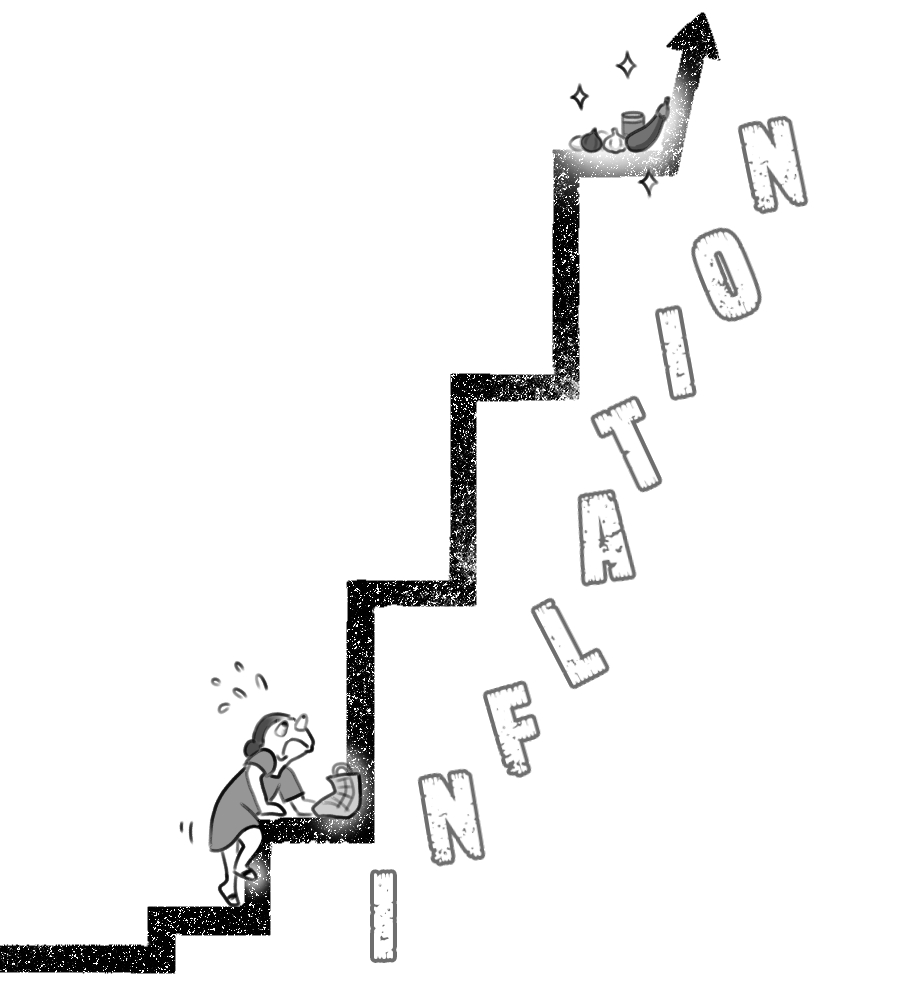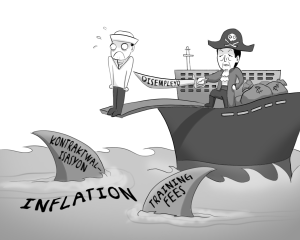Correspondence Is inflation rising because demand is increasing?


The toiling masses were not surprised over news that inflation shot up to 7.7% last October. They know very well how their wages and income are dropping, as their families suffer from hunger pangs.
They were dumbfounded, however, by the proud claims of economic growth made by state officials purportedly as a result of a rise in household spending as people “returned” to “pre-pandemic life.” This supposedly created an “increase in demand” which they point as reason behind the continuing rise in commodity prices.
“Buwaon! Hirap na hirap na mga tawo didi, nanun insasabi nila na lumalaki ang demand?” (Lies! People here are so hard up, what increased demand are they talking about?) This was the reaction of Mang Tani, a 37-year old farm-worker in a coconut farm in Sorsogon, when told about the matter.
The Bicol region registered a 7.2% regional inflation in October, up by 0.6% compared to September. As in other parts of the country, food prices in the region rose fastest.
These price increases are an additional burden on Mang Tani. He planted cassava on the land of his tenant parents to supplement their income. Even if he works a third job, he still doesn’t earn enough. Throughout the region, wages in all sectors are stuck at ₱345/day. It is far from the ₱1,119 daily living wage for a family of five.
The same is true of Mai Sinay, a grandmother with a 5-hectare coconut farm tended to by her family.
“Our income is grossly insufficient especially with the low prices of copra today,” she said. She takes care of five grandchildren, ages five to 16-years old.
“Aside from food, electricity charges are heaviest,” she said. “Then there are the children’s school projects.” Mai Sinay has nothing more to spend beyond their basic needs.
Like Mang Tani, Mai’s family is not among those who caused a “rising demand.”
“In fact, it has gone down because we have nothing more to spend,” she said. “Our money also buys less things.”
Incorrect analysis, incorrect response
The Ibon Foundation criticized the state for raising interest rates as way of controlling further rises in inflation. The Central Bank of the Philippines has raised interest rates six times since July.
According to the group, increasing interest rates can further choke the economy, cause more unemployment and pull down household income. “The economy has been slowing, so-called job creation is mostly low-paying and informal, and household incomes are already suppressed.”
Raising interest rates is not the correct way to control inflation, it said. This is because prices are increasing not because of an increase in demand. (In capitalist countries, inflation tend to rise when employment is high and working-class consumers have money to spend.) According to Ibon, what we are seeing is “cost-push” inflation. It is the rising cost of production that pushes up the prices of commodities.
In fact, household spending has gone down, as reflected in the state’s data over the past three quarters. (Household spending is the sum of expenses of families for basic necessities such as food, clothing, rent, electricity, transportation, durable goods such as cars, medical expenses, recreation and other services.) In the Philippines, this form 80% of the gross domestic product, and is one of the main barometers of demand.
The workers’ movement clamor for wage increases amid high inflation. Due to rising prices, the ₱570 minimum wage in the National Capital Region is now worth only of ₱494. Wages should long have been raised, especially since they were severely eroded by the past devastating lockdowns, price increases of petroleum products and so on. At the same time, the democratic sectors demand for the state to suspend or remove taxes imposed on commodities such as VAT and oil excise taxes.









